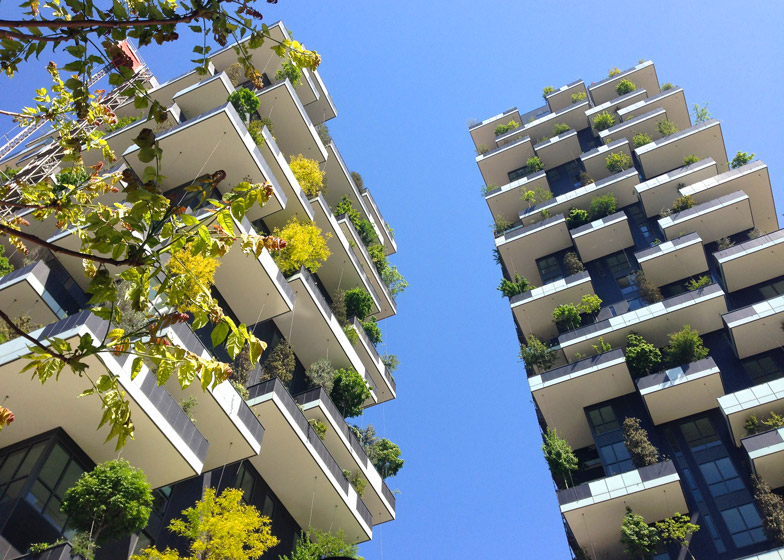
Milan is one of the most polluted cities in the world, and the Bosco Verticale project aims to mitigate some of the environmental damage that has been inflicted upon the city by urbanization. The design is made up of two high-density tower blocks with integrated photovoltaic energy systems and trees and vegetation planted on the facade. The plants help capture CO2 and dust in the air, reduce the need to mechanically heat and cool the tower’s apartments, and help mitigate the area’s urban heat island effect – particularly during the summer when temperatures can reach over 100 degrees.
The two towers measure 260 feet and 367 feet tall respectively, and together they have the capacity to hold 480 big and medium size trees, 250 small size trees, 11,000 ground-cover plants and 5,000 shrubs (that’s the equivalent of 2.5 acres of forest). The types of trees were chosen based on where they would be positioned on the buildings’ facades and it took over two years of working with botanists to decide which trees would be most appropriate for the buildings and the climate. The plants used in the project were grown specifically for the building, pre-cultivated so that they would gradually acclimate to the conditions they would experience once placed on the building.

Given the lack of green space in the city, Milan’s environment does not promote biodiversity. The new plantings will provide an urban eco-system able to support the presence of birds and insects. Bosco Verticale has the potential to balance out the city’s environmental damage and to create a self-sufficient ecosystem.
Even more impressive is the fact that the construction of the towers cost just five percent more than an average skyscraper, and the project’s vertical design provides space that is equal to an area of sprawl measuring 538,200 square feet. The structure is sure to set a precedent not only for new developments Milan, but also for similar cities who have witnessed the same level of urbanization. The innovative concept provides a viable model for reforestation within the confines of a developed city.
Wiki:
Wiki:
Bosco Verticale (Vertical Forest) is a pair of residential towers in the Porta Nuova district of Milan, Italy. Within the complex is also an 11-story office building; its facade does not host plants.
The towers were designed by Stefano Boeri, Gianandrea Barreca and Giovanni La Varra. It also involved input from horticulturalists and botanists.
The building was inaugurated in October 2014.




No comments:
Post a Comment